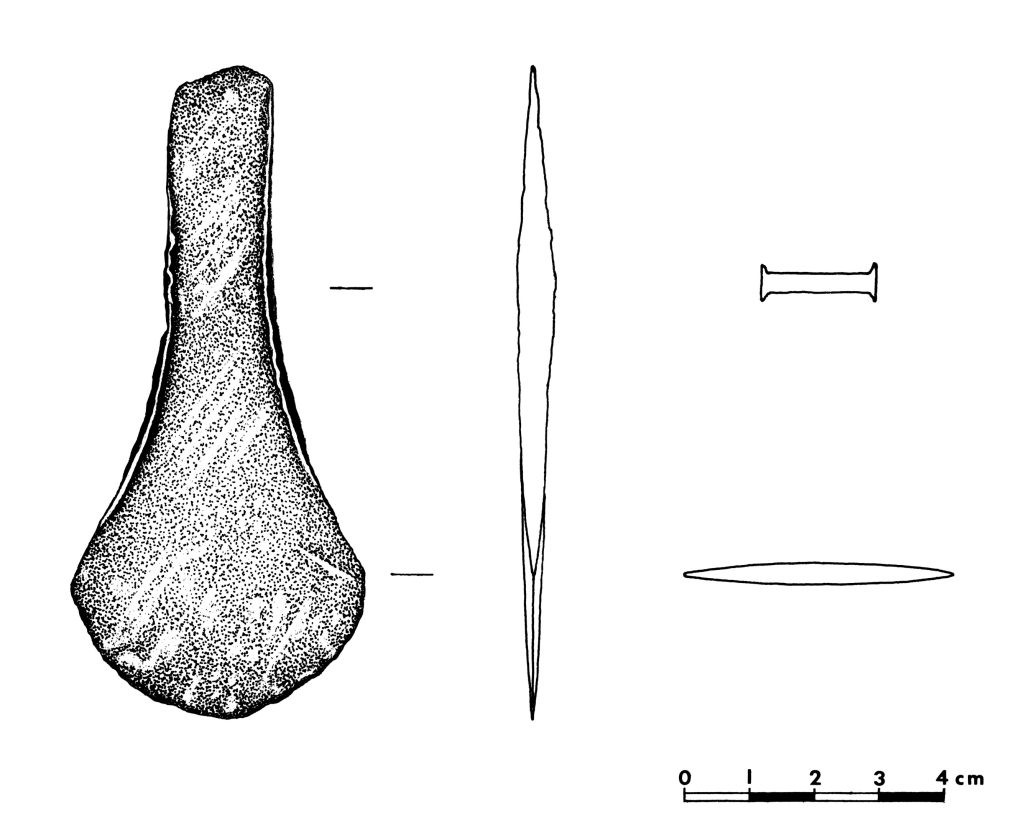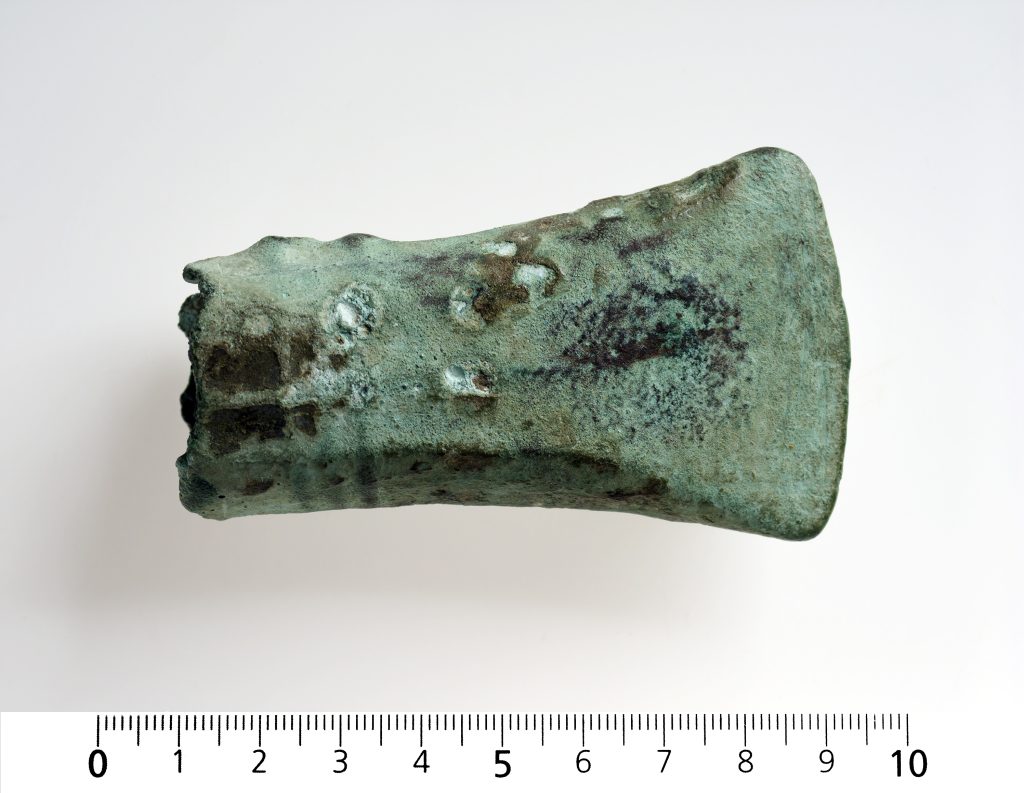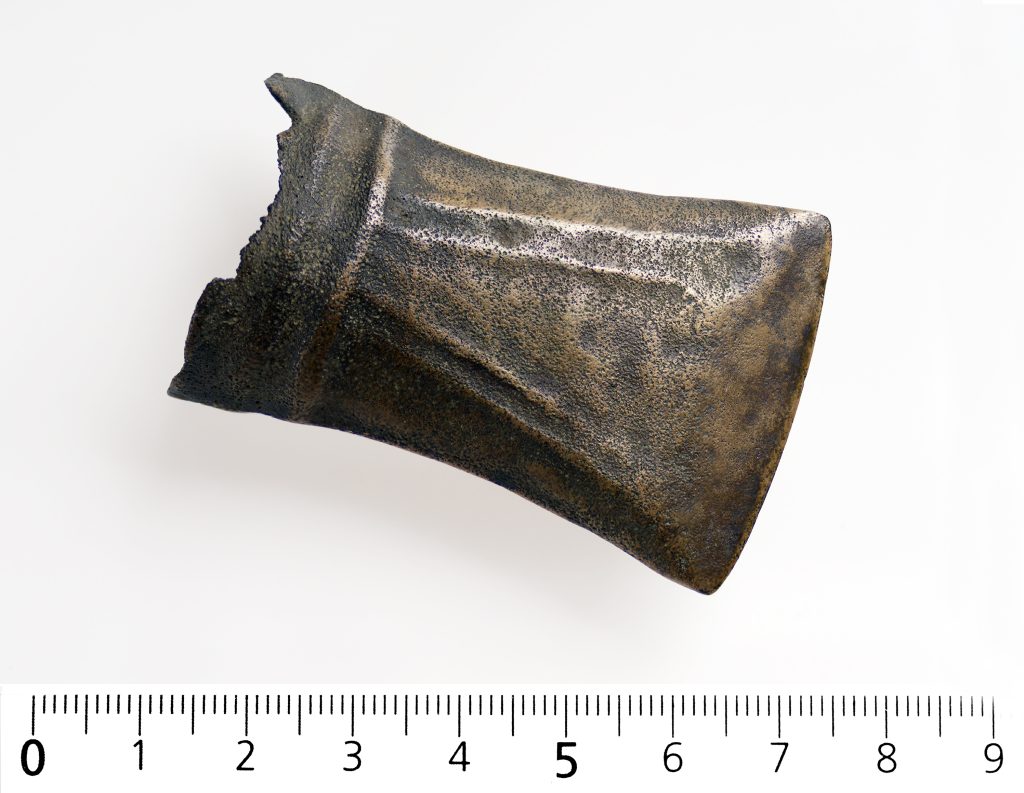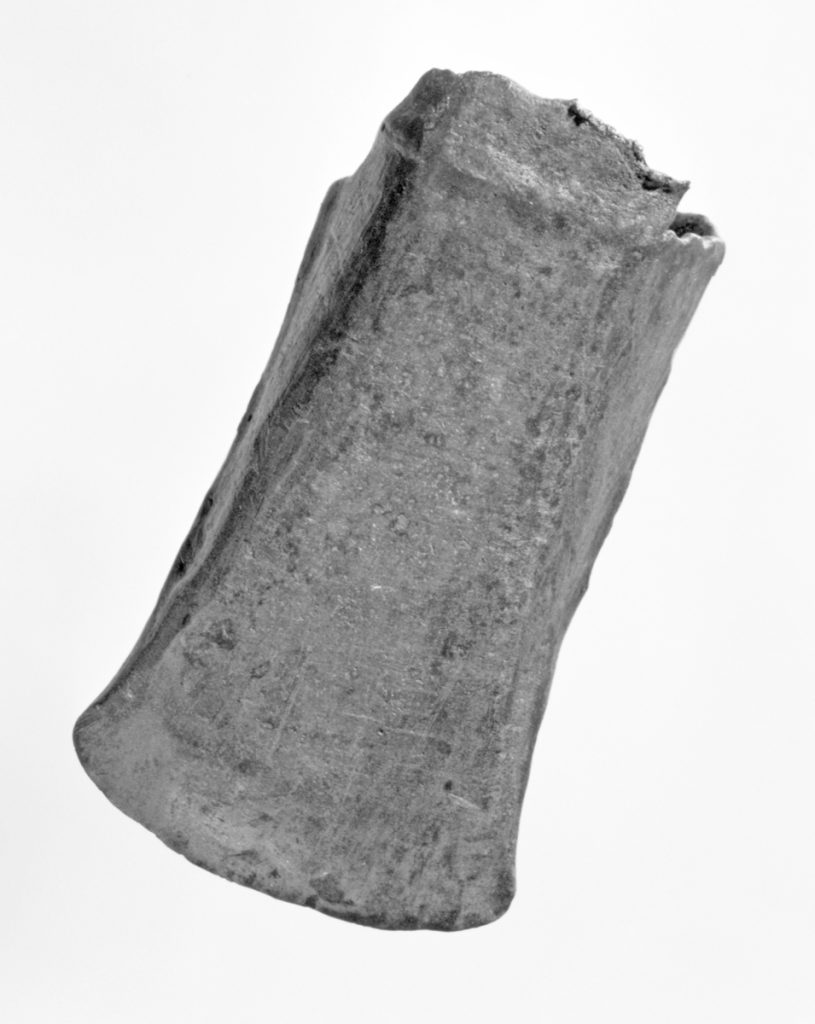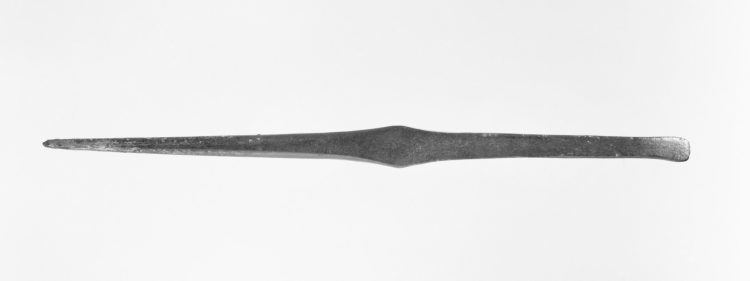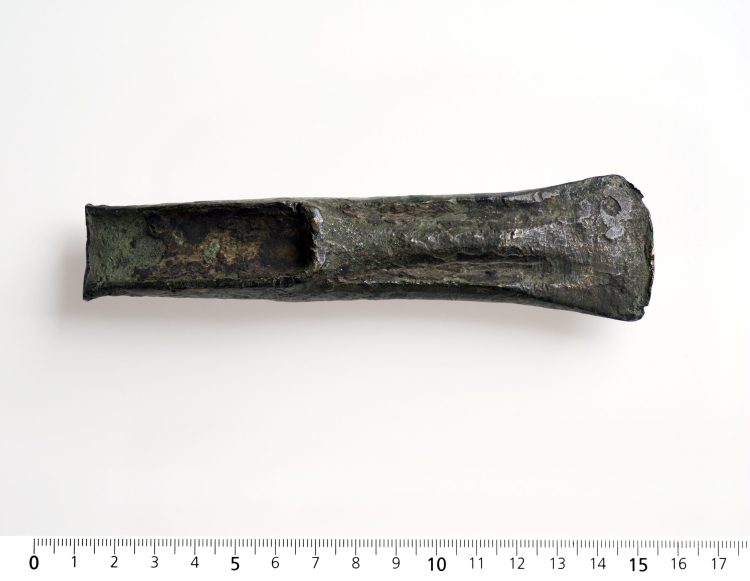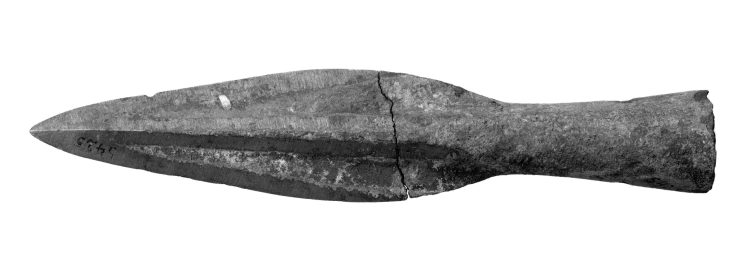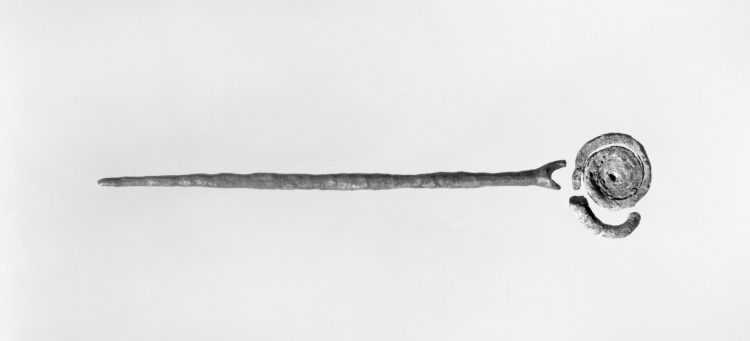
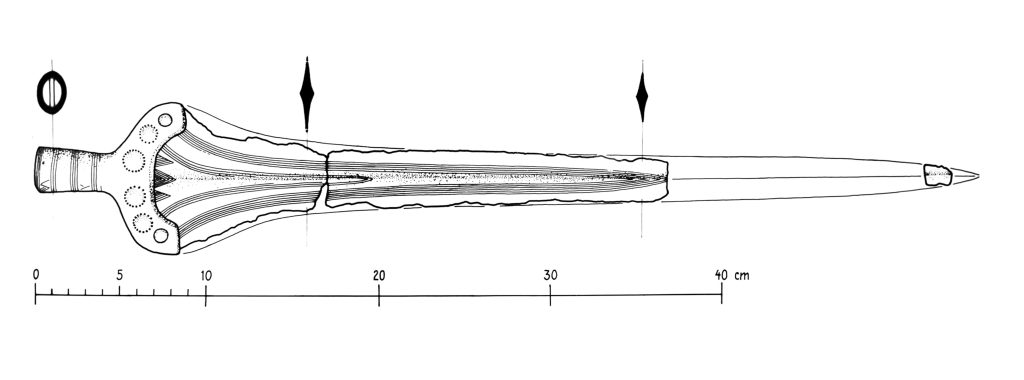
Incomplete sword with socketed hilt,. The lower part of the blade is missing; the remaining blade was broken in two and is glued together. There is a small fragment of the lower part of the blade, near the point. There is some damage to the edges of the blade, and the hilt is severely corroded. The blade is ogival with midrib; the shoulders are convex and semi-circular. The hilt consists of an oval hollow-cast tube and narrow plate attached to the blade with two rivets. Between the rivets there are four fake rivets. There is a rivet inside the socket. The socket and blade are decorated: the socket has three sets of horizontal lines and a faint outline of triangles below the mouth of the socket and between the line bundles. The blade has three striated triangles below the two central fake rivets, and four line bundles run from the shoulders and down the blade. The outer line bundles consist of six lines and flank first the inner line bundles and then the midrib, finally converging at the section where the blade is broken. The inner line bundles consist of four lines and flank the midrib and converge about 13 cm down the blade. Hadju-sámson type. Parallels: a sword from Roum, Jutland and the sword from Nebra (Engedal 2010). Length: 36.9 cm. Width: 8.9 cm across shoulders.
Context:
Found during road construction. The finder had dug a ditch and noticed a branch-like object jutting out from the side of the ditch. It broke when he hit it with the spade, and he noticed that the fracture was golden. He subsequently pulled out the object and realised that it was a sword. The spot was covered up, including fragments of the sword. Later, the area was further disturbed by road building. The exact position is not known, but according to reports at the time it might have been next to a rock, or on a ledge in the rock, on a steep rocky slope. The area was excavated in 1969, without any finds. The missing fragments of the sword were not found. Two flanged axes have been found on the farm, B12125 and B13373.
Location:
Blindheim (gnr. 17/1), Ålesund, Møre & Romsdal
Date:
Swords of this type are rare, only four parallels are known, and they are dated to the Early Bronze Age period 1. The sword can thus be dated to period 1.


